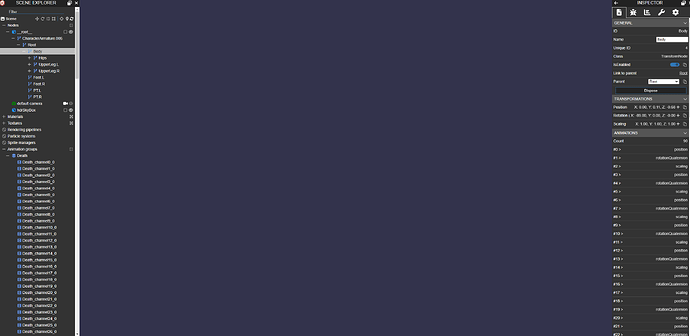I felt like I lacked an overall understanding, so I analyzed good models. I hope this analysis helps you
A model = adventurer(skeleton, mesh-skeleton, animation-skeleton)
All of the model’s animations were bound by the skeleton.
Therefore, it can be seen that there is no problem even if a transformnode other than the bound bone structure is deleted or transformed in the parent relationship. (In the case of a specific binding structure, the corresponding parent must also be maintained.)
B model = humanoid-skeleton(animation-key frame, transfromNodes-key frame)
The transform node that looks like a skeleton actually has no skeleton and has animation consisting of key-frames of the transform.
So, if you have a player as the B model,
By binding the clothes to be customized to exactly match the transform, you will get matching results when running the key-frame animation.
ex PG
C model = witch-legs(skeleton(different structure in A model skeleton),mesh-skeleton)
The C model has a mesh bound to the skeleton without animation.
However, since the bone structure of the model is different from model A (it is expected to be different from model B, which is assumed to have bones), animation at an incorrect position will occur as shown in the following PG.
ex PG
As a result
- Add skeleton to model B and create animation bound to it
- Mesh bound to model C with a skeleton matching model B
- The skeleton of the custom mesh of the C model is designated as the skeleton of the B model, and the parent is also declared as a substructure of the B model.



